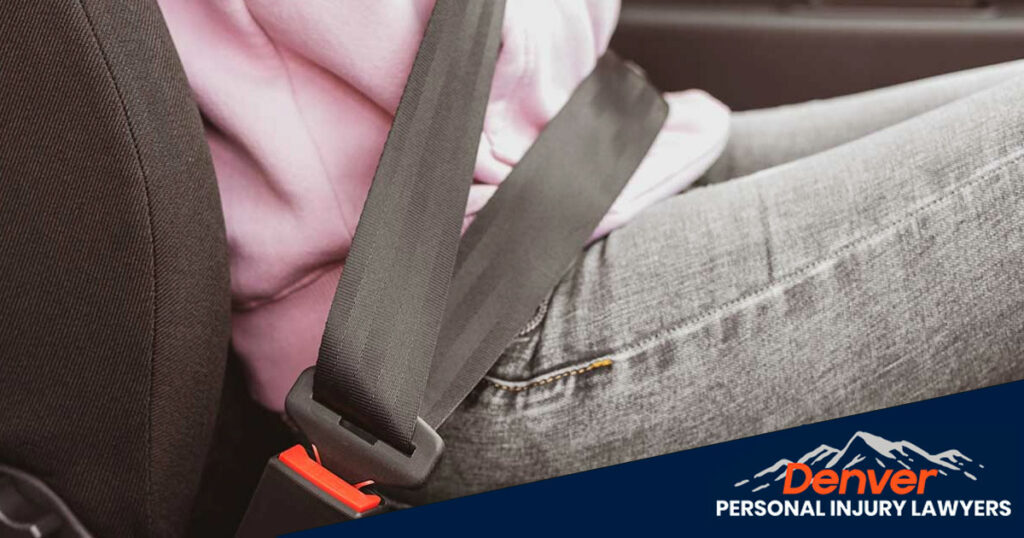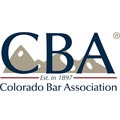When you buckle up in Denver, the click of a seatbelt is more than a mere routine; it’s a critical safety measure that significantly reduces the risk of injury during car accidents. Despite this, seatbelt injuries are a real and often overlooked consequence of vehicle collisions.
This article serves as an essential guide, delving into:
The types and severity of seatbelt injuries
Legal aspects surrounding such incidents
Available compensation avenues for those affected
As you navigate the aftermath of a car accident, remember that informed decisions about your health and rights start with recognizing the potential for seatbelt-related harm. If you seek further legal insight or support, consider reaching out to Denver Personal Injury Lawyers, who prioritize listening to your needs and providing individual attention from start to finish throughout your case.
Table of Contents
ToggleUnderstanding Seatbelt Injuries
Seatbelt injuries occur when the body experiences the force of a car accident. The sudden stop or impact can cause various types of injuries due to the seatbelt restraining the body.
Types of Seatbelt Injuries
Here are the most common types of seatbelt injuries:
Bruised or Fractured Ribs: The seatbelt’s pressure on the chest area during a collision can lead to bruised or fractured ribs. These injuries are painful and require immediate medical attention.
Contusions (or bruises): Contusions happen when the seatbelt impact causes blood vessels under the skin to break, resulting in visible discoloration on the skin.
Abrasions and Scrapes on the skin: Seatbelts can also create abrasions or scrapes on the skin. The friction between the seatbelt and skin during an accident can cause red, raw patches.
Sternum fractures: During a car accident, the force of impact transmitted through a seatbelt can potentially lead to sternum fractures due to sudden deceleration.
Women’s injuries: Women have an additional risk of sternum fractures because of their body structure and how seatbelts are positioned across the chest. There is also the risk of damage to breast implants.
Understanding these injury types is crucial for:
A quick diagnosis and treatment if you’re in a car accident
A better understanding of potential compensation claims, as different injuries may lead to varying amounts of compensation.
Seeking Medical Treatment and Documenting Injuries
When you’re involved in a car accident in Denver, your first priority should be to seek timely medical examination. This step is not just about immediate care but also plays a critical role in the long-term impact of your seatbelt injuries.
1. Immediate Medical Attention
After a car accident, you may experience adrenaline rushes that can mask pain, leading to underestimation of your injuries. It’s imperative to have a healthcare professional assess you for both visible and potential internal injuries. Early diagnosis can be vital for conditions like “seat belt syndrome,” where internal damage might not be immediately apparent.
2. Documentation Is Key
If you proceed with an insurance claim or legal action, having a well-documented medical record is essential. Ensure that all visits — whether they’re to an ER, clinic, or specialist — are noted. Record dates, treatments received, medications prescribed, and any referrals for further care.
3. Treatment Costs
Understandably, medical treatment costs can be substantial. These might include:
Emergency services
Hospital stays
Surgery
Rehabilitation
Prescription medication
Follow-up appointments
4. Covering Medical Costs
You’ll need to consider how these expenses will be covered. Options include:
The at-fault party’s liability coverage
Medical payment coverage if included in your auto policy
Your health insurance plan
Remember that Colorado follows the at-fault system, which means that the driver who caused the accident (and their insurance) is typically responsible for paying medical expenses. If you’re having trouble or are unsure how to go about being compensated, a Denver car accident attorney is your best resource.
5. Medical Reports as Evidence
The documentation you accumulate serves as evidence linking your injuries directly to the car crash. Detailed medical reports strengthen your case by substantiating the extent and causation of your injuries.
By maintaining accurate records and understanding the costs and avenues for coverage, you lay the groundwork necessary for any compensation claims related to your seatbelt injuries. With this foundation in place, you can then explore legal options available for recovering these costs without bearing the financial burden alone.
As you navigate through this complex process, remember that each decision can significantly impact your physical recovery and financial well-being following a car crash in Denver.
Legal Aspects: Fault Determination and Compensation Claims
When you’re involved in a car accident in Denver, understanding fault determination in seatbelt injury cases is essential. The responsible party’s identification impacts your ability to recover damages for your injuries. Here are the critical elements of fault and compensation that you need to consider:
Fault Determination
Determining fault requires a detailed analysis of the accident circumstances. It often involves:
Police Reports: Official documentation that may indicate who violated traffic laws.
Witness Testimony: Accounts from onlookers can provide insights into the accident dynamics.
Expert Analysis: Accident reconstruction specialists may be needed to decipher complex scenarios.
The outcome of this analysis affects who is liable for your injuries and what compensation you can seek.
Compensation Options
Victims of seatbelt injuries have several avenues for compensation, including:
Medical Expenses: Coverage for hospital bills, rehabilitation costs, and ongoing medical care.
Lost Wages: Reimbursement for income lost due to inability to work post-accident.
Pain and Suffering: Compensation for physical pain and emotional distress resulting from the injuries.
Each component addresses a specific aspect of the harm suffered due to the seatbelt injury.
Making a Claim with Insurance
After an accident, you might file a claim with your insurance company or the at-fault party’s insurer. This step typically involves:
Notification: Informing the insurance companies about the accident promptly.
Documentation: Submitting medical records, receipts, and other evidence of expenses incurred.
Negotiation: Discussing settlement options with adjusters to cover your losses adequately.
An insurance claim might settle the matter without going to court, but it’s important to ensure you receive a fair offer.
Going After the At-Fault Driver
If insurance does not fully cover your damages or if fault is contested, pursuing legal action against the at-fault driver may be necessary. This process can include:
Filing a Lawsuit: Initiating formal legal proceedings if negotiations fail.
Discovery: Exchanging information between parties to build a case.
Trial or Settlement: Resolving through court judgment or mutual agreement.
This path may lead to more substantial compensation but also involves more complexity and potential legal expenses.
Complexity of Liability
Liability in seatbelt injury cases can be multifaceted. Factors like comparative negligence—where both parties share some blame—or manufacturer defects in seatbelts complicate fault determination. Expert legal guidance is often required to navigate these complexities successfully.
Potential Compensation Options Overview
Victims should understand all potential sources of recovery:
Insurance Policies: Personal Injury Protection (PIP) coverage or uninsured motorist coverage may apply.
Personal Assets: If the at-fault party has significant personal assets, they may be pursued for compensation.
Legal Settlements: In cases involving multiple parties or severe injuries, structured settlements could be negotiated.
Assessing all available resources ensures that victims receive adequate remuneration for their injuries and suffering caused by the car accident.
Why You Need a Denver Car Accident Attorney
Dealing with the aftermath of a car accident can be overwhelming. From communicating with insurance companies to navigating legal procedures and filing a personal injury claim, it’s a complex process. That’s where a Denver car accident attorney comes in. They can provide valuable assistance throughout this journey, ensuring that your rights are safeguarded.
1. Effective Negotiation
One of the key benefits of having a Denver car accident attorney on your side is their ability to negotiate for you. Insurance companies are known for trying to minimize their payouts, but your attorney will be dedicated to fighting for fair compensation for your seatbelt injuries. They know how to navigate the intricacies of negotiation and have the expertise to effectively communicate with insurance adjusters.
2. Specialized Knowledge
Another advantage of working with a Denver car accident attorney is their specialized knowledge in handling seatbelt injury cases. They have a deep understanding of the medical aspects involved, including potential complications and long-term impacts of such injuries. This expertise allows them to build a strong case on your behalf and seek maximum compensation, taking into consideration all current and future expenses related to your injuries.
3. Peace of Mind
While you focus on recovering from your injuries, it’s reassuring to know that someone is fighting for justice on your behalf. A Denver car accident attorney not only provides legal representation but also offers peace of mind. They are dedicated to tirelessly working towards ensuring that you receive the rightful compensation you deserve, allowing you to concentrate on healing physically and emotionally.
Having a skilled advocate like a Denver car accident attorney by your side can make all the difference in navigating the complexities of a car accident claim. From guiding you through the legal process to representing your best interests, they are committed to helping you move forward towards recovery with confidence.
Contact a Denver Car Accident Attorney for a Free Consultation
Dealing with the aftermath of a car accident can be overwhelming, but you don’t have to face it alone. It’s important to get help from a skilled Denver car accident attorney who can protect your rights if you’ve been injured due to a seatbelt malfunction. Having a lawyer who knows how to handle these types of cases can greatly increase your chances of getting the compensation you deserve.
When it comes to personal injury claims, every little detail counts. That’s why having an experienced attorney by your side is so crucial. They can help you navigate the complexities of the legal process and make sure that all the important information about your case is carefully documented and presented.
As your next step, we invite you to contact our law firm for a free consultation. This is an opportunity for you to speak with us about your situation, get an idea of what potential outcomes you might expect, and find out how we can support you during this difficult time. There’s no pressure or obligation – it’s simply a chance for us to learn more about your case and offer guidance based on our expertise.
Remember, understanding your rights and exploring your legal options is the first step towards recovery. We’re here to help you on that journey, providing the support and representation you need.
















